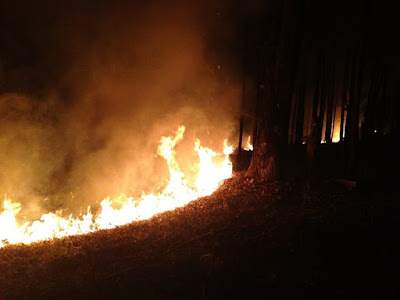By Chris R.
The
lowlands of the Sanctuary have highly fertile soil, easy to dig and needing
little improvement. Benefitting from the annual flow of Gidgegannup
Brook, they are rich and dark, excellent conditions for growing a range of
fruit and vegetables.
Chemicals
are not used in the gardens at Possum Valley. This ensures any free
ranging animals or visiting fauna are not exposed to a possible
poisoning. It also ensures the food that both we and our residents
consume is safe and totally organic. With time often short, veggie patch
maintenance is irregular and sometimes limited, but remains productive,
enjoyable and often quite pretty. So how do you manage pests while maintaining
production, with little time on hand?
Here are
some key tips to a happy and healthy vegetable garden – even in the smallest of
suburban lots:
- Feed the
ground: Add
compost, manure and mulch such as pea straw to feed soils; vegetables are
hungry plants, promptly using nutrients that will need constant replenishment.
- Mix it
up: Don’t plant the
same vegetable in the same place each time. Crop rotation may minimise
the build-up of pests and can counter certain soil deficiencies, which may
occur from a monoculture in the same bed. Plantings of legumes such as
peas and beans will increase nitrogen in a plot, ready for nutrient-hungry
species, such as tomatoes.
- Promote
good bugs: Mother
nature created a suite of bugs that can help pollinate plants and prey upon
pest species. Plant species in and around vegetables which will nurture the
good guys. These include a range of herbs and also annual flowers such as
marigold, alyssum and lavender.
- Water
well: Mulch beds
well to reduce water use. Shade plants in hot conditions with shade cloth
or even a cotton sheet to reduce evaporation and prevent leaf scorching. Don’t
skimp on watering vegetables when needed, but be water wise by giving them a
big drink early in the day.
- Sow
often: Stagger
plantings to ensure an ongoing supply of your favourite vegetables. Make
sure you allow for garden visitors in your planting regime (we have bunnies
stopping by often at the silver beet patch, so additional plants are added).
- Be
vigilant: Just a
few minutes on a weekend can highlight problems which can jeopardise your
crop. Use finely crushed egg shells and diatomaceous earth to discourage
insect pests on any plant. Chickens will assist with pest collection,
just keep an eye they don’t peck or dig at plants you wish to take.
- Plant in
season: Take note
of the growing seasons of different crops. Brassica will often bolt to
seed in a few short weeks if conditions are hot, while tomatoes will fail to
fruit if too cold. Minimise disappointment by growing plants compatible
to seasonal conditions.
 |
| A Possum Valley Harvest. |
- Weeds: Weeding a flower lined veggie patch
can be highly therapeutic. As weeds are not sprayed at Possum Valley,
they are collected often and fed out to the various birds and poultry as
appropriate. Parrots enjoy annual grasses (especially with seed heads and
sandy roots attached) and thistles are relished by chickens. Be careful to
learn toxic species of your area – do not feed to animals and put in the
bin to prevent recurrence in the garden.
Easy to
grow species, which are relatively pest free include loose leaf lettuce, kale,
Asian veggies, chillies, spring onions and silver beet. Cherry tomatoes
are much easier to grow than larger tomato types, and produce heavy crops for
long periods. Silvereyes and Red-capped Parrots enjoy the cherry tomatoes
and chillies, so plant additional seedlings to share. Excess crops, or
those spoiled by our native visitors, are not wasted, rather they are collected
for the roosters and peacocks who aren’t concerned by a few peck holes and
excited to see the ‘seconds’ barrow arriving each weekend.



















